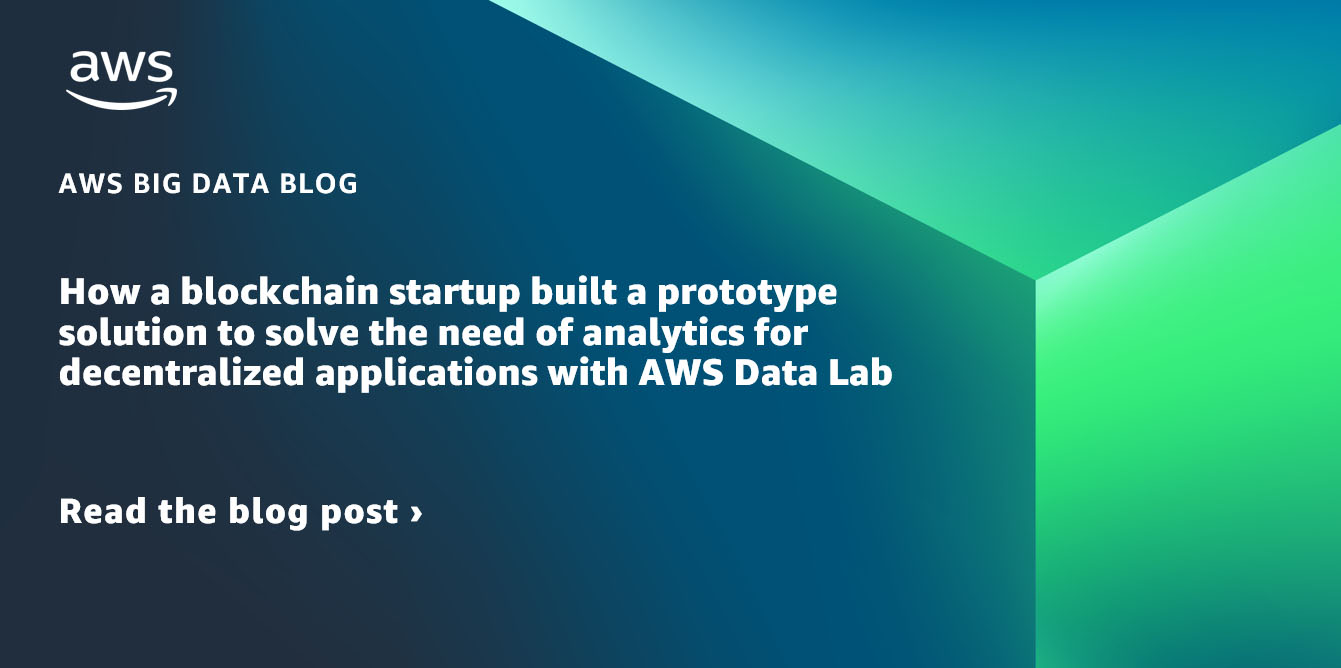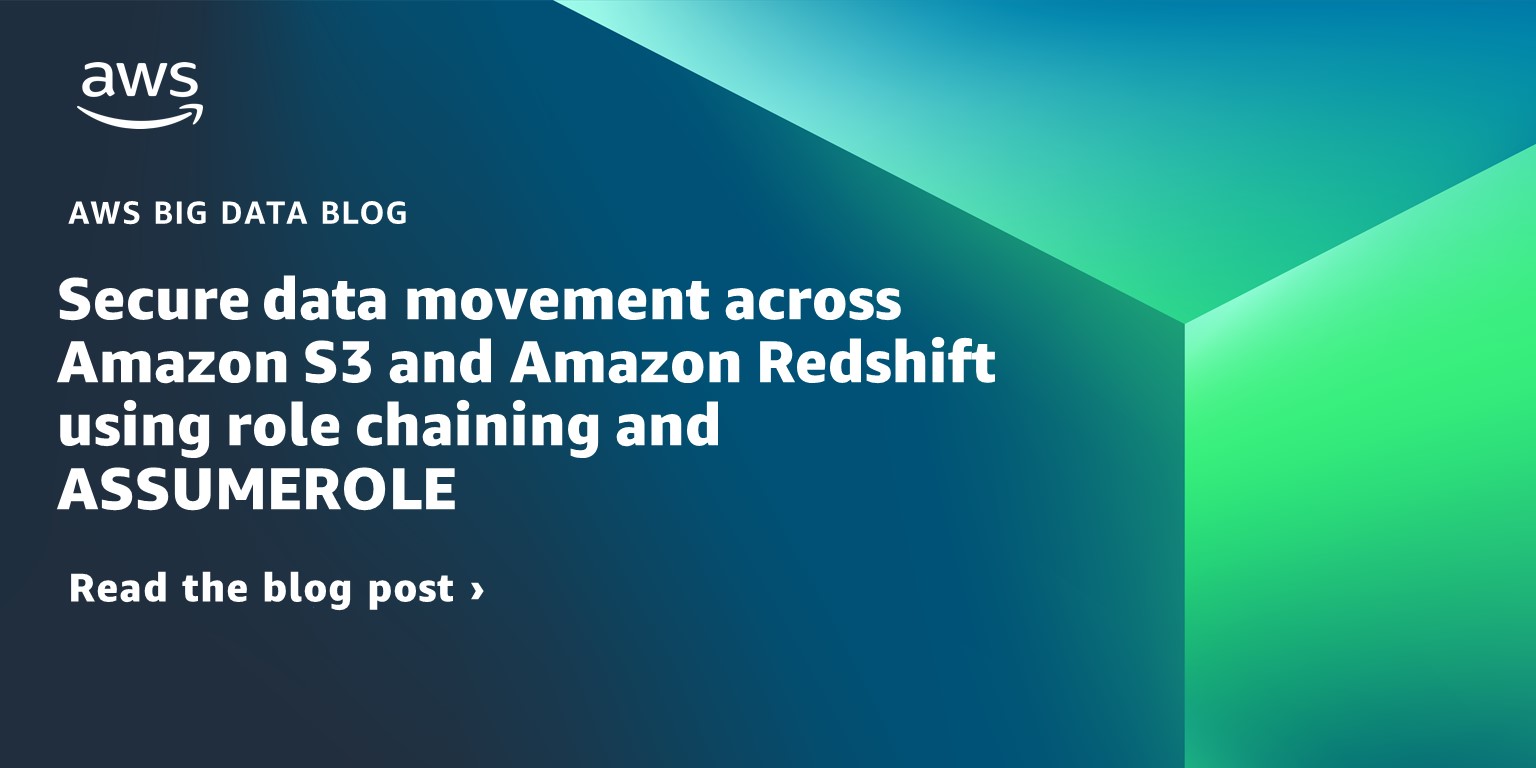AWS Big Data Blog
Category: Amazon Simple Storage Service (S3)
How a blockchain startup built a prototype solution to solve the need of analytics for decentralized applications with AWS Data Lab
February 9, 2024: Amazon Kinesis Data Firehose has been renamed to Amazon Data Firehose. Read the AWS What’s New post to learn more. This post is co-written with Dr. Quan Hoang Nguyen, CTO at Fantom Foundation. Here at Fantom Foundation (Fantom), we have developed a high performance, highly scalable, and secure smart contract platform. It’s […]
Build incremental crawls of data lakes with existing Glue catalog tables
AWS Glue includes crawlers, a capability that make discovering datasets simpler by scanning data in Amazon Simple Storage Service (Amazon S3) and relational databases, extracting their schema, and automatically populating the AWS Glue Data Catalog, which keeps the metadata current. This reduces the time to insight by making newly ingested data quickly available for analysis […]
Convert Oracle XML BLOB data using Amazon EMR and load to Amazon Redshift
In legacy relational database management systems, data is stored in several complex data types, such XML, JSON, BLOB, or CLOB. This data might contain valuable information that is often difficult to transform into insights, so you might be looking for ways to load and use this data in a modern cloud data warehouse such as […]
Optimize Federated Query Performance using EXPLAIN and EXPLAIN ANALYZE in Amazon Athena
Amazon Athena is an interactive query service that makes it easy to analyze data in Amazon Simple Storage Service (Amazon S3) using standard SQL. Athena is serverless, so there is no infrastructure to manage, and you pay only for the queries that you run. In 2019, Athena added support for federated queries to run SQL […]
Build a big data Lambda architecture for batch and real-time analytics using Amazon Redshift
February 9, 2024: Amazon Kinesis Data Firehose has been renamed to Amazon Data Firehose. Read the AWS What’s New post to learn more. With real-time information about customers, products, and applications in hand, organizations can take action as events happen in their business application. For example, you can prevent financial fraud, deliver personalized offers, and […]
Simplify your ETL and ML pipelines using the Amazon Athena UNLOAD feature
Many organizations prefer SQL for data preparation because they already have developers for extract, transform, and load (ETL) jobs and analysts preparing data for machine learning (ML) who understand and write SQL queries. Amazon Athena is an interactive query service that makes it easy to analyze data in Amazon Simple Storage Service (Amazon S3) using […]
Secure data movement across Amazon S3 and Amazon Redshift using role chaining and ASSUMEROLE
Data lakes use a ring of purpose-built data services around a central data lake. Data needs to move between these services and data stores easily and securely. The following are some examples of such services: Amazon Simple Storage Service (Amazon S3), which stores structured, unstructured, and semi-structured data Amazon Redshift, a fully managed, petabyte-scale data […]
Best practices to optimize data access performance from Amazon EMR and AWS Glue to Amazon S3
June 2023: This post was reviewed and updated for accuracy. Customers are increasingly building data lakes to store data at massive scale in the cloud. It’s common to use distributed computing engines, cloud-native databases, and data warehouses when you want to process and analyze your data in data lakes. Amazon EMR and AWS Glue are […]
Design patterns: Set up AWS Glue Crawlers using S3 event notifications
The AWS Well-Architected Data Analytics Lens provides a set of guiding principles for analytics applications on AWS. One of the best practices it talks about is build a central Data Catalog to store, share, and track metadata changes. AWS Glue provides a Data Catalog to fulfill this requirement. AWS Glue also provides crawlers that automatically […]
Improve reusability and security using Amazon Athena parameterized queries
Amazon Athena is a serverless interactive query service that makes it easy to analyze data in Amazon Simple Storage Service (Amazon S3) using standard SQL, and you only pay for the amount of data scanned by your queries. If you use SQL to analyze your business on a daily basis, you may find yourself repeatedly […]









